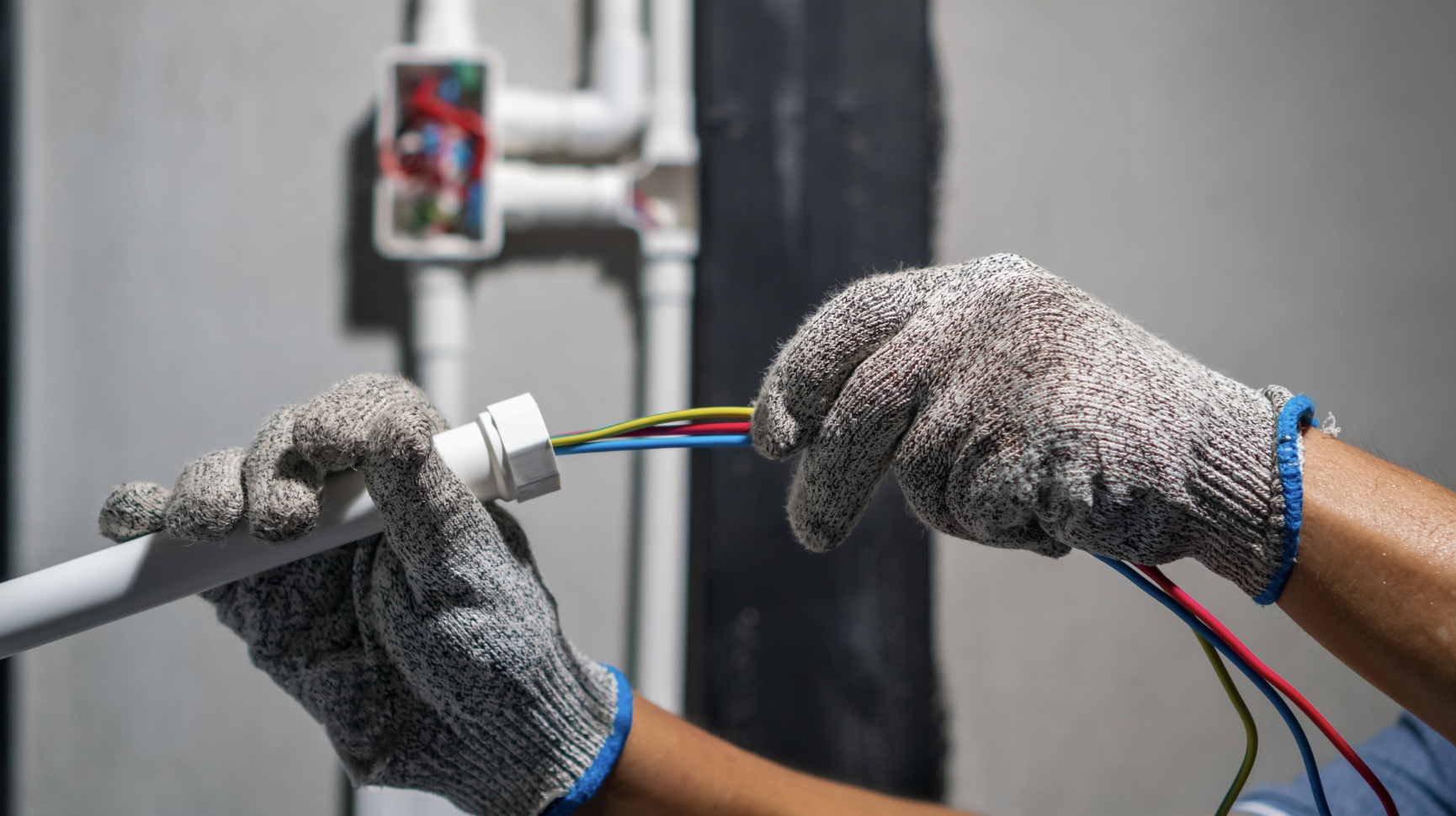Basics of Electrical Wiring - Types, Sizes, and Uses
by Quotebeam Team
May 31, 2024

Electrical wiring ensures smooth and safe transmission of power from the source to various devices and systems. Understanding the basics of electrical wiring, including the different types, sizes, and uses, is important for anyone involved in electrical work. In this article, we’ll explore what constitutes an electrical wire, differentiate between the electrical wire and cable, delve into the various wire sizes, and examine the types of electrical wires and their specific uses.
What is in an Electrical Wire?
At its core, an electrical wire is a conductor that transmits electrical power or signals from one location to another. The primary components of an electrical wire include:
- Conductor: Usually made of copper or aluminum, the conductor is the metal core that carries the electrical current.
- Insulation: Surrounding the conductor is a layer of insulating material, often made from plastic or rubber, which prevents electrical shocks and short circuits by keeping the current confined within the conductor.
- Sheathing: In some cases, wires have an additional outer layer called sheathing, which provides extra protection against physical damage, moisture, and chemical exposure.
Understanding these components is essential as they determine the wire's efficiency, safety, and suitability for various applications.
Electrical Cable vs. Electrical Wire - What is the Difference?
The terms "electrical wire" and "electrical cable" are often used interchangeably, but they refer to different things:
- Electrical Wire: A single conductor, which can be either solid or stranded. Solid wire consists of one piece of metal wire, while stranded wire is made of multiple smaller wires twisted together. Wires are typically used for internal wiring in devices and control panels.
- Electrical Cable: A group of two or more conductors bundled together, usually encased in a protective outer sheath. Cables are designed for more complex installations, such as running power from a breaker panel to outlets, lighting, and other appliances.
By distinguishing between wire and cable, you can choose the right product for your specific needs, ensuring both safety and functionality.
Different Electrical Wire Sizes
Electrical wires come in various sizes, typically measured by their gauge. The American Wire Gauge (AWG) system is the standard for measuring wire sizes in the United States. The gauge number indicates the wire's diameter, with smaller numbers representing thicker wires. Here are some common wire sizes and their typical uses:
- 14 AWG: Used for general lighting and receptacle circuits in residential wiring.
- 12 AWG: Suitable for kitchen and bathroom outlets, as well as for wiring appliances like dishwashers and refrigerators.
- 10 AWG: Often used for air conditioners, water heaters, and other high-power appliances.
- 8 AWG and thicker: Typically used for heavy-duty applications, such as electrical ranges, sub-panels, and feeders.
Selecting the appropriate wire size is critical for preventing overheating, reducing voltage drop, and ensuring the safety and efficiency of your electrical system.
What are the Types of Electrical Wires and Their Uses?
There are several types of electrical wires, each designed for specific applications and environments. Understanding these types can help you select the right wire for your project. Here are some common types of electrical wires and their uses:
- THHN/THWN Wire: Commonly used in building construction, THHN (Thermoplastic High Heat-resistant Nylon-coated) and THWN (Thermoplastic Heat and Water-resistant Nylon-coated) wires are versatile, offering high heat resistance and suitability for wet locations.
- Romex (NM) Cable: A popular choice for residential wiring, Romex cable consists of multiple wires encased in a plastic sheath. It is easy to work with and is used for general electrical wiring in homes.
- UF (Underground Feeder) Cable: Designed for direct burial, UF cable is highly durable and resistant to moisture, making it ideal for outdoor and underground installations.
- MC (Metal-Clad) Cable: MC cable features a metal sheathing that provides excellent protection against physical damage and electromagnetic interference, making it suitable for industrial and commercial applications.
MC Electrical Cables
MC (Metal-Clad) cables are designed with a metal sheath providing robust protection for the internal conductors. This makes them ideal for environments where the cables might be exposed to physical damage or require extra shielding against electromagnetic interference. MC cables are commonly used in:
- Industrial settings
- Commercial buildings
- Areas with high mechanical impact risk
UF (Underground Feeder) Cable
UF (Underground Feeder) cables are built to withstand harsh conditions, making them perfect for outdoor and underground installations. The construction of UF cables includes:
- Durable Insulation: Resistant to moisture and soil chemicals.
- Direct Burial Capability: Eliminates the need for conduits in most underground installations.
Common uses for UF cables include:
- Outdoor lighting
- Garden and landscape power
- Outbuilding wiring
NM-B Cable
NM-B (Non-Metallic Sheathed) cable, commonly known as Romex, is widely used in residential wiring. This type of cable is known for its ease of use and flexibility. Key features of NM-B cable include:
- Multiple Conductors: Typically includes two or more insulated conductors and a bare ground wire.
- Plastic Sheath: Provides basic protection and is easy to strip and handle.
NM-B cable is ideal for:
- Interior residential wiring
- Lighting circuits
Understanding the types, sizes, and uses of electrical wires is crucial for safe and efficient electrical installations. Whether you're working on a residential project, an industrial installation, or an outdoor setup, selecting the right wire ensures the safety and reliability of your electrical system. By familiarizing yourself with these basics, you can approach your electrical projects with confidence and expertise.
